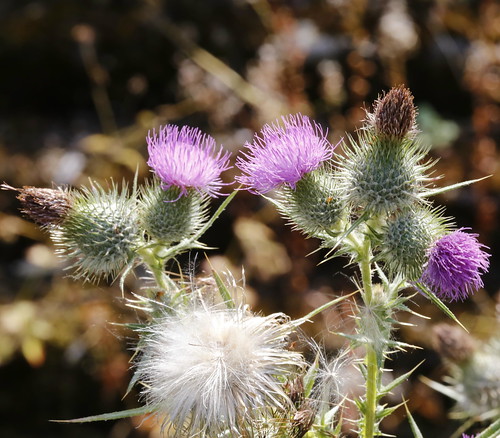Lead to MedChemExpress [DTrp6]-LH-RH aortic dissection [42] and contributes to aortic aneurysm formation [44]. In addition, macrophages are the major source of protease activity in aneurysmal Octapressin biological activity tissues [25] and produce proinflammatory cytokines such as IL-6 [26]. In our study, we found significantly more macrophages in the aortic wall of TAA and TAD tissue than in control aortic tissue, and both NICD and Hes1 were detected in most macrophages; these findings indicate that Notch signaling is activated in macrophages. It was recently reported that inflammatory macrophage polarization was promoted by transcription factor IRF8, which is regulated by Notch signaling [45], and the activation of Notch signaling in macrophages positively regulates IL-6 expression via NF-kB [26].Furthermore, blocking the Notch signaling pathway inhibits vascular inflammation in large-vessel vasculitis [46]. Thus, we speculate that the activation of Notch signaling in macrophages of DTAAD tissue contributes to aortic inflammation and plays a destructive role in DTAAD formation and progression. In our study, the total levels of Notch1, NICD, and Hes1 were increased in the aortas of DTAAD patients. Although Notch signaling was downregulated in medial VSMCs, it was activated in CD34+, Stro-1+ stem cells, CD68+ macrophages, and EN-TR7+ fibroblasts. Because the number of these types of cells is significantly increased in DTAAD compared with control tissues, the significant activation of Notch signaling in these cell populations may be responsible for the overall upregulation of Notch signaling in the aorta of DTAAD patients.Notch Signaling in Aortic  Aneurysm and DissectionFigure 6. Notch signaling is activated in macrophages in DTAAD. A) CD68 was used as the marker for macrophages in immunofluorescence double staining experiments. Significantly more macrophages were seen in the aortic wall of TAA and TAD tissues compared with control tissue (TAA vs. control, P,0.001; TAD vs. control, P,0.001), and NICD was detected in most macrophages in TAA and TAD tissues (TAA vs. control, P,0.001; TAD vs. control, P,0.001) (scale bar = 25 mm, insets 6.25 mm). Error bars indicate the standard deviation in the number of NICD+macrophages. B) Immunofluorescence double staining showed that Hes1 was highly expressed in macrophages in the aortic wall of both TAA and TAD tissues (scale bar = 50 mm). doi:10.1371/journal.pone.0052833.gGiven the differences in the pathobiology of aneurysmal disease in a given segment of the aorta, it is unclear whether Notch signaling will show similar patterns of disease occurring in the ascending aorta, descending thoracic aorta, and abdominal aorta. It was recently reported that expression of NOTCH3 mRNA was decreased in human AAA tissue when compared with control tissue samples from significantly younger organ donors (AAA patients, 71.567.5 years; donors, 42.7612.5 years) [19]. Notch signaling was also found to be decreased in ascending aortas from patients with BAV, which increases the risk of premature death and of developing AAD, compared with patients who have a normal trileaflet aortic valve (TAV) [20]. Furthermore, genetic variation in NOTCH1 appears to confer susceptibility to ascending aortic aneurysm formation in patients with BAV but not inpatients with TAV [21]. Thus, altered Notch signaling may play a critical role in the development of AAD. This study has several important limitations. First, it is a descriptive study, and the role of Notch signaling in aortic remodeling.Lead to aortic dissection [42] and contributes to aortic aneurysm formation [44]. In addition, macrophages are the major source of protease activity in aneurysmal tissues [25] and produce proinflammatory cytokines such as IL-6 [26]. In our study, we found significantly more macrophages in the aortic wall of TAA and TAD tissue than in control aortic tissue, and both NICD and Hes1 were detected in most macrophages; these findings indicate that Notch signaling is activated in macrophages. It was recently reported that inflammatory macrophage polarization was promoted by transcription factor
Aneurysm and DissectionFigure 6. Notch signaling is activated in macrophages in DTAAD. A) CD68 was used as the marker for macrophages in immunofluorescence double staining experiments. Significantly more macrophages were seen in the aortic wall of TAA and TAD tissues compared with control tissue (TAA vs. control, P,0.001; TAD vs. control, P,0.001), and NICD was detected in most macrophages in TAA and TAD tissues (TAA vs. control, P,0.001; TAD vs. control, P,0.001) (scale bar = 25 mm, insets 6.25 mm). Error bars indicate the standard deviation in the number of NICD+macrophages. B) Immunofluorescence double staining showed that Hes1 was highly expressed in macrophages in the aortic wall of both TAA and TAD tissues (scale bar = 50 mm). doi:10.1371/journal.pone.0052833.gGiven the differences in the pathobiology of aneurysmal disease in a given segment of the aorta, it is unclear whether Notch signaling will show similar patterns of disease occurring in the ascending aorta, descending thoracic aorta, and abdominal aorta. It was recently reported that expression of NOTCH3 mRNA was decreased in human AAA tissue when compared with control tissue samples from significantly younger organ donors (AAA patients, 71.567.5 years; donors, 42.7612.5 years) [19]. Notch signaling was also found to be decreased in ascending aortas from patients with BAV, which increases the risk of premature death and of developing AAD, compared with patients who have a normal trileaflet aortic valve (TAV) [20]. Furthermore, genetic variation in NOTCH1 appears to confer susceptibility to ascending aortic aneurysm formation in patients with BAV but not inpatients with TAV [21]. Thus, altered Notch signaling may play a critical role in the development of AAD. This study has several important limitations. First, it is a descriptive study, and the role of Notch signaling in aortic remodeling.Lead to aortic dissection [42] and contributes to aortic aneurysm formation [44]. In addition, macrophages are the major source of protease activity in aneurysmal tissues [25] and produce proinflammatory cytokines such as IL-6 [26]. In our study, we found significantly more macrophages in the aortic wall of TAA and TAD tissue than in control aortic tissue, and both NICD and Hes1 were detected in most macrophages; these findings indicate that Notch signaling is activated in macrophages. It was recently reported that inflammatory macrophage polarization was promoted by transcription factor  IRF8, which is regulated by Notch signaling [45], and the activation of Notch signaling in macrophages positively regulates IL-6 expression via NF-kB [26].Furthermore, blocking the Notch signaling pathway inhibits vascular inflammation in large-vessel vasculitis [46]. Thus, we speculate that the activation of Notch signaling in macrophages of DTAAD tissue contributes to aortic inflammation and plays a destructive role in DTAAD formation and progression. In our study, the total levels of Notch1, NICD, and Hes1 were increased in the aortas of DTAAD patients. Although Notch signaling was downregulated in medial VSMCs, it was activated in CD34+, Stro-1+ stem cells, CD68+ macrophages, and EN-TR7+ fibroblasts. Because the number of these types of cells is significantly increased in DTAAD compared with control tissues, the significant activation of Notch signaling in these cell populations may be responsible for the overall upregulation of Notch signaling in the aorta of DTAAD patients.Notch Signaling in Aortic Aneurysm and DissectionFigure 6. Notch signaling is activated in macrophages in DTAAD. A) CD68 was used as the marker for macrophages in immunofluorescence double staining experiments. Significantly more macrophages were seen in the aortic wall of TAA and TAD tissues compared with control tissue (TAA vs. control, P,0.001; TAD vs. control, P,0.001), and NICD was detected in most macrophages in TAA and TAD tissues (TAA vs. control, P,0.001; TAD vs. control, P,0.001) (scale bar = 25 mm, insets 6.25 mm). Error bars indicate the standard deviation in the number of NICD+macrophages. B) Immunofluorescence double staining showed that Hes1 was highly expressed in macrophages in the aortic wall of both TAA and TAD tissues (scale bar = 50 mm). doi:10.1371/journal.pone.0052833.gGiven the differences in the pathobiology of aneurysmal disease in a given segment of the aorta, it is unclear whether Notch signaling will show similar patterns of disease occurring in the ascending aorta, descending thoracic aorta, and abdominal aorta. It was recently reported that expression of NOTCH3 mRNA was decreased in human AAA tissue when compared with control tissue samples from significantly younger organ donors (AAA patients, 71.567.5 years; donors, 42.7612.5 years) [19]. Notch signaling was also found to be decreased in ascending aortas from patients with BAV, which increases the risk of premature death and of developing AAD, compared with patients who have a normal trileaflet aortic valve (TAV) [20]. Furthermore, genetic variation in NOTCH1 appears to confer susceptibility to ascending aortic aneurysm formation in patients with BAV but not inpatients with TAV [21]. Thus, altered Notch signaling may play a critical role in the development of AAD. This study has several important limitations. First, it is a descriptive study, and the role of Notch signaling in aortic remodeling.
IRF8, which is regulated by Notch signaling [45], and the activation of Notch signaling in macrophages positively regulates IL-6 expression via NF-kB [26].Furthermore, blocking the Notch signaling pathway inhibits vascular inflammation in large-vessel vasculitis [46]. Thus, we speculate that the activation of Notch signaling in macrophages of DTAAD tissue contributes to aortic inflammation and plays a destructive role in DTAAD formation and progression. In our study, the total levels of Notch1, NICD, and Hes1 were increased in the aortas of DTAAD patients. Although Notch signaling was downregulated in medial VSMCs, it was activated in CD34+, Stro-1+ stem cells, CD68+ macrophages, and EN-TR7+ fibroblasts. Because the number of these types of cells is significantly increased in DTAAD compared with control tissues, the significant activation of Notch signaling in these cell populations may be responsible for the overall upregulation of Notch signaling in the aorta of DTAAD patients.Notch Signaling in Aortic Aneurysm and DissectionFigure 6. Notch signaling is activated in macrophages in DTAAD. A) CD68 was used as the marker for macrophages in immunofluorescence double staining experiments. Significantly more macrophages were seen in the aortic wall of TAA and TAD tissues compared with control tissue (TAA vs. control, P,0.001; TAD vs. control, P,0.001), and NICD was detected in most macrophages in TAA and TAD tissues (TAA vs. control, P,0.001; TAD vs. control, P,0.001) (scale bar = 25 mm, insets 6.25 mm). Error bars indicate the standard deviation in the number of NICD+macrophages. B) Immunofluorescence double staining showed that Hes1 was highly expressed in macrophages in the aortic wall of both TAA and TAD tissues (scale bar = 50 mm). doi:10.1371/journal.pone.0052833.gGiven the differences in the pathobiology of aneurysmal disease in a given segment of the aorta, it is unclear whether Notch signaling will show similar patterns of disease occurring in the ascending aorta, descending thoracic aorta, and abdominal aorta. It was recently reported that expression of NOTCH3 mRNA was decreased in human AAA tissue when compared with control tissue samples from significantly younger organ donors (AAA patients, 71.567.5 years; donors, 42.7612.5 years) [19]. Notch signaling was also found to be decreased in ascending aortas from patients with BAV, which increases the risk of premature death and of developing AAD, compared with patients who have a normal trileaflet aortic valve (TAV) [20]. Furthermore, genetic variation in NOTCH1 appears to confer susceptibility to ascending aortic aneurysm formation in patients with BAV but not inpatients with TAV [21]. Thus, altered Notch signaling may play a critical role in the development of AAD. This study has several important limitations. First, it is a descriptive study, and the role of Notch signaling in aortic remodeling.
